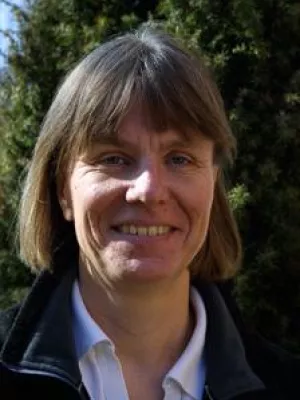
Katarina Hedlund
Professor

Ecology of parasitoids and their hosts in oilseed rape fields
Author
Summary, in English
This thesis addresses the following questions: How do pollen beetle parasitoids avoid competition while sharing the same host species? Do parasitoids of the cabbage stem weevil use the landscape on a smaller scale than their host? How does agricultural landscape configuration affect the community composition and potential interaction networks of herbivore and parasitoid communities? What is the relative contribution of niche assembly and dispersal assembly to empirical species abundance distributions of parasitoids and beetles?
I found evidence for both temporal, spatial and behavioural niche separation between pollen beetle parasitoids: All three studied parasitoid species use odours for host location, but they differ in timing, host stage preference and host microhabitat preference.
Although ecological theory expects parasitoids to use landscape on a smaller scale than their hosts because of a smaller body size and extreme specialisation, I found no support for this expectation in the parasitoids of the cabbage stem weevil: While habitat proportion at the 1 km scale was the most important predictor for abundances of the cabbage stem weevil, this scale did not matter for both its parasitoid species, whose abundances were best explained by pesticide application and host abundance (in Tersilochus obscurator), or host abundance only (in Stibeutes curvispina), regardless of scale. Probably they utilise the landscape on a larger functional scale than their host.
On community level, the presences and absences of several parasitoid species and host species were affected by several landscape variables: Distance from the collection site to forested land, and oilseed rape within a 1 km radius, was an important predictor of variation in community composition. Host-parasitoid interaction networks became more asymmetrical with increasing distance from forests, due to relatively fewer pest than parasitoid species. Consequently, growing oilseed rape in regions that are situated far away from forests is likely to minimize recolonization by pest species and at the same time to attract more parasitoid species from the open landscape.
The variation in both parameters of parasitoid species abundance distributions was significantly affected by environmental variables, but not by geographical distance. From this, we conclude that parasitoids in the metacommunity have sufficiently high dispersal rates to track environmental variation between the local sites. In contrast, there was no effect of environmental variables on beetle species abundance distributions, but beetle commonness was dependent on geographical distance between sites, which was most pronounced at the 4-6 km scale. This indicates that the most common beetle species in oilseed rape fields are stronger affected by geographical proximity than the most common parasitoid species.
Taken together, the results of my thesis suggest that parasitoid wasps in the oilseed rape habitat can disperse over larger distances than what was previously thought. Hence, there is a need for large-scale perspective on parasitoid abundances that reaches beyond a few kilometres, if we want to promote the persistence and the diversity of parasitoid wasps in the agricultural landscape.
Department/s
- Biodiversity
Publishing year
2019
Language
English
Full text
Document type
Dissertation
Publisher
Media-Tryck, Lund University, Sweden
Topic
- Ecology
Keywords
- parasitoids
- herbivores
- oilseed rape
- pollen beetle
- cabbage stem weevil
- parasitoid community
- niche separation
- landscape scale
- community composition
- landscape configuration
- Species abundance distribution (SAD) models
- dispersal
- metacommunity
Status
Published
Supervisor
- Katarina Hedlund
- Olle Anderbrant
ISBN/ISSN/Other
- ISBN: 978-91-7895-076-8
- ISBN: 978-91-7895-075-1
Defence date
10 May 2019
Defence time
09:30
Defence place
Lecture hall "Blå hallen", Ecology building, Sölvegatan 37, Lund
Opponent
- Stefan Vidal (Prof. Dr.)